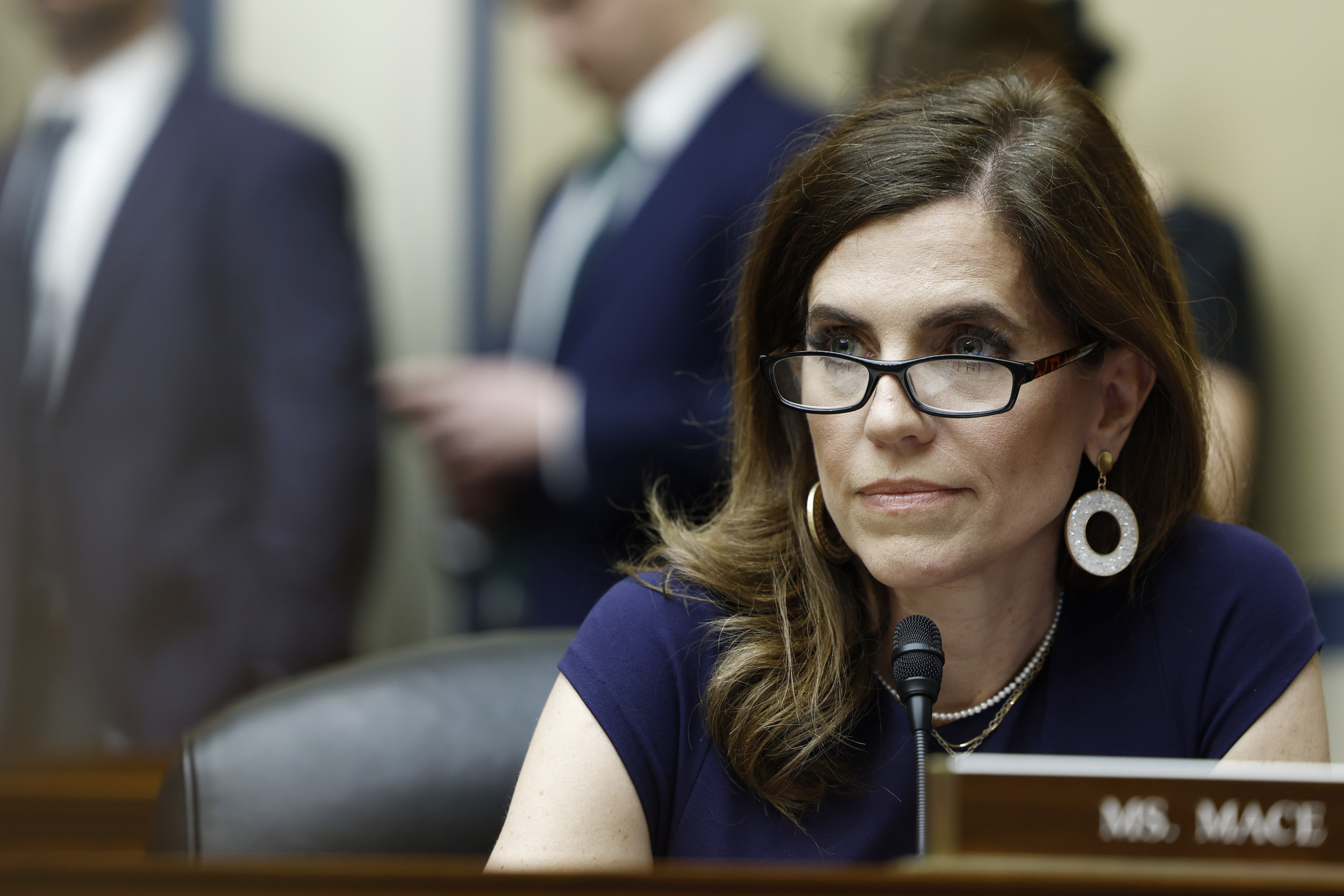- Ukraine's army has undergone significant changes and upgrades since the start of Russia's full-scale invasion in February 2022.
- Its armed forces are battle-hardened, but constantly expending their stocks and personnel.
- Ukraine and Russia's armed forces are actively engaged in conflict, unlike many of the world's major powers.
- Kyiv has the will to win, experts told Newsweek, but whether it will still have the capability is uncertain.
Ukraine has "probably the best army in the world at the moment," retired Australian army major Mick Ryan said in March.
"And it's not probably, they are," he added to Ukrainian media.
"They're the most experienced at modern warfare, they've demonstrated that over the last 13 months," and despite heavy losses since the outbreak of all-out war, Kyiv's armed forces had learned many lessons, Ryan said.
The reality, however, may be more complicated, experts say. Ryan's statement went "definitely too far," according to political scientist Pavel Baev—but in his assessment it was a "deliberate and perhaps morale-boosting" evaluation.
Battle-Hardened Ukrainians
The Ukrainian armed forces are "gaining in strength every week," Baev, a research professor at the Peace Research Institute Oslo and a senior nonresident fellow at the Brookings Institution, told Newsweek. Kyiv's military is engaging in clashes each and every day, building up battle experience—but this is something Russia is doing, too.
"There's no doubt that the Ukrainians have more recent combat experience than any other country other than Russia," Mark Cancian, a senior adviser with the Center for Strategic & International Studies International Security Program, previously told Newsweek.
The armed forces of the U.S., U.K. and China, which are not engaged in fighting like Ukraine and Russia, are not amassing the same experience.
And it's experience that is being gained across the Ukrainian population. The country's armed forces, having undergone significant changes since the beginning of 2022, now include many fighters who had not even been part of the military prior to February 24, 2022.
Among these new recruits was former infrastructure minister Volodymyr Omelyan, who told Newsweek in March that he enlisted on the very day of the invasion.

Ukraine's armed forces are "absolutely" the best by a measure of total high-end combat experience, military analyst David Stone told Newsweek. Ukraine's practical experience in high-end, modern warfare, which "counts for a lot." But it is a specific kind of war, Stone said, as opposed to the likes of counterinsurgency or guerrilla warfare, which would require a different set of skills.
U.S. military counterinsurgency operations in Iraq and Afghanistan furnishes its armed forces with this different kind of combat experience, Stone said.
"Ukraine has the best army in the world for the sort of war that Ukraine is fighting," defense and military technology expert Michael Peck told Newsweek.
"The Ukrainians have shown remarkable adaptability and ingenuity in battling a larger and better-equipped Russian invasion force."
But fighting to defend your country, as Ukraine is doing, is always different to heading off to war in another country, Stone argued.
"That will to fight, that will to defend, that unifying sense of national purpose, is difficult to quantify," according to David Dunn, professor of political science at Birmingham University, U.K. Tough to pin down with numbers or facts, it is nonetheless is a "huge" consideration, he told Newsweek.
"Societal resilience is just as important as the size of the army," former U.S. Army Europe commander Lt. Gen. (Retd) Ben Hodges said.
Size of the Armed Forces
Just how big a country's armed forces are is clearly an important consideration, however. As of 2023, Russia had an estimated 1,330,900 people listed among its total military personnel, compared with 500,000 for Ukraine, according to data published by Statista in February.
Russia had 830,900 active soldiers, with Ukraine at 200,000, according to this data. Both countries had reserve forces of 250,000 people.
Russia's active soldier count was the fifth highest worldwide, according to Statista. In first place was China, with two million active soldiers in 2022. India was second, the U.S. third, and North Korea fourth.
Russian President Vladimir Putin has repeatedly moved to increase the size of Russia's armed forces since the start of the Ukraine war, including through the "partial mobilization" of 300,000 Russian fighters in September 2022. It is not known precisely how many casualties Russia has sustained in the fighting so far; Kyiv's estimates in late March put the figure above 170,000, which is higher than typical Western estimates.
Russia has remained tight-lipped about its losses, not offering an update since fall 2022. Mobilization, however, means that personnel numbers "have increased relative to previous years' figures," according to the International Institute of Strategic Studies' annual Military Balance report for 2023.
But combat experience, bringing crucial advantages to both Russia and Ukraine, is a "double-edged sword," Stone said. It is not known how many of Ukraine's experienced officers remain when it comes to the lower rungs of the command chain, he added. In the initial stages of the war, Russia lost significant amounts of its "elite" or more experienced personnel, refilling ranks with less experienced recruits.
Replete with young recruits without specific skillsets in a top-down structure, Russia's army has a "very difficult character" to the Ukrainian armed forces that are now pulling diverse expertise from a population that would not otherwise be involved in the military, Dunn said.
NATO weapons and 'remarkable adaptability'
Ukraine's pre-war armed forces were decked out with Soviet-era weaponry, now supplemented with the likes of NATO-standard main battle tanks and Western air defense systems. In late March, German-made Leopard 2 and the British Challenger 2 tanks rolled into Ukraine, and the U.S. said it would speed up deliveries of Patriot surface-to-air missile systems.
This flow of Western artillery and weapons to Ukraine is "modernizing Kyiv's inventory and delivering improved capability," according to the IISS report, released in February 2023. Ukraine's artillery and vehicles are undergoing a "transformation, thanks to Western assistance," the think tank wrote.
Ukraine's newly formed brigades are gaining experience with new weapons systems, integrating these capabilities into their forces as time goes on, Baev said.
Ukrainians, although "obviously extremely dependent on Western aid," nonetheless "learn how to use new equipment faster than any soldiers I've ever seen," Hodges said.
"Some types of equipment are simply better than others," Stone said. "Certainly, the equipment that Ukraine is getting will be able to improve their military performance."
"But that's only one element," he added, despite the addition of Western tanks providing an important new capability for Ukraine's military.

"Technology is a great asset, but it's not going to decide who wins on the battlefield," Marina Miron, post-doctoral researcher at the War Studies Department, King's College London, U.K. told Newsweek. Experts say that armed forces' ability to use the equipment at their disposal, which entails adequate training, logistics, planning and combined arms tactics, determines just how well a military can perform.
And while Ukraine has received upgraded kit, "there's no doubt that Russia has done enormous damage to its military capability," Stone said. It has "burned through" much of its modern stocks, resorting to older equipment to replace these losses, he added.
"The fact that the Russians are going to antiquated systems shows that they are not able to keep up," he said. "Certainly in terms of material quality, the Russian army has taken an enormous hit."
Military Spending
The United States' military spending far outstrips that of other nations, according to Statista. In 2021, U.S. military spending constituted 38 percent of the total military spending across the globe.
In second place—but far behind the U.S.—came China, followed by India, the U.K., and then Russia. Prior to the start of the Ukraine war, Kyiv's military expenditure had been on the rise since 2016, Statista figures show, accounting for around 4 percent of the country's gross domestic product (GDP) in 2020 and dipping slightly in 2021.
But military spending fluctuates over time. By the end World War II, the U.S. and U.K. had a far bigger proportion of the population in the military, because "when a country is in a position where the stakes are very, very high, they can mobilize a lot of their population," Stone said.
The same principle applies to military budgets, he said, because "if you're fighting for survival, then you're going to put a huge amount of your economy into into the war effort." Compared with the Cold War era, U.S. military spending has dropped, but compared with present-day European NATO countries, it remains higher.
Ukraine Playing Catch-Up
Despite the capabilities Ukraine has gained over the past year, its armed forces still have a "major weakness," Baev said. The "severe shortage of airpower" for Ukraine means "it cannot be compared with the U.S. or Chinese armies," despite Russia failing to establish air dominance in Ukraine.
It is hard to paint an accurate picture of Russian and Ukrainian losses throughout the war, but Statista figures for 2023 showed Russia to have more than 4,100 aircraft, compared with Ukraine's 312.
However, Russia's air force—like those of the U.S., U.K., and China—claims to have fifth-generation fighter jets. Although some experts doubt whether Russia's jets, such as the Su-57, can actually be classed as such, they still offer more advanced capabilities than the Soviet-era jets Ukraine is operating. Poland and Slovakia have donated MiG-29s that Ukraine has maintained in its fleet for years, but these do not make for a significantly upgraded air force.
Western countries have resisted Kyiv's calls to donate NATO-standard fighter jets, such as the F-16, which would be a boost to those Ukraine has at its disposal. But experts say it is not just a question of how advanced the jet is: it's a combination of the aircraft and the logistics, the supply chains, the support apparatus and the training.
Although many Ukrainian servicepeople have received some training on their new NATO equipment, their chances of using new weapons systems and tanks to their full potential will increase over time.
But the future of Ukraine's armed forces remains uncertain. With the outcome of the war still in the balance, it is not yet known what shape Kyiv's military will take once emergency military aid from its Western backers drops off.
"Clearly Ukraine has superior will to win," Hodges said, but the current levels of Western military aid will not last forever. "Whether or not they have the necessary logistics to win will depend on us," he added.
But although the tranches of military aid may dwindle, the "cauldron of war has forged new capabilities" for Ukraine, Dunn said. Ukraine's military has undergone intensive, rapid training to be "absolutely at the forefront" of warfare innovation, he added, and will remain on the front line of European security for a while to come.
Uncommon Knowledge
Newsweek is committed to challenging conventional wisdom and finding connections in the search for common ground.
Newsweek is committed to challenging conventional wisdom and finding connections in the search for common ground.
About the writer
Ellie Cook is a Newsweek security and defense reporter based in London, U.K. Her work focuses largely on the Russia-Ukraine ... Read more





